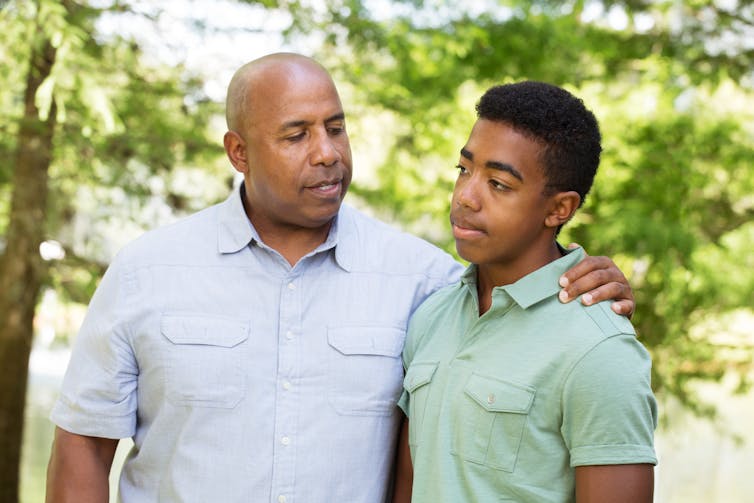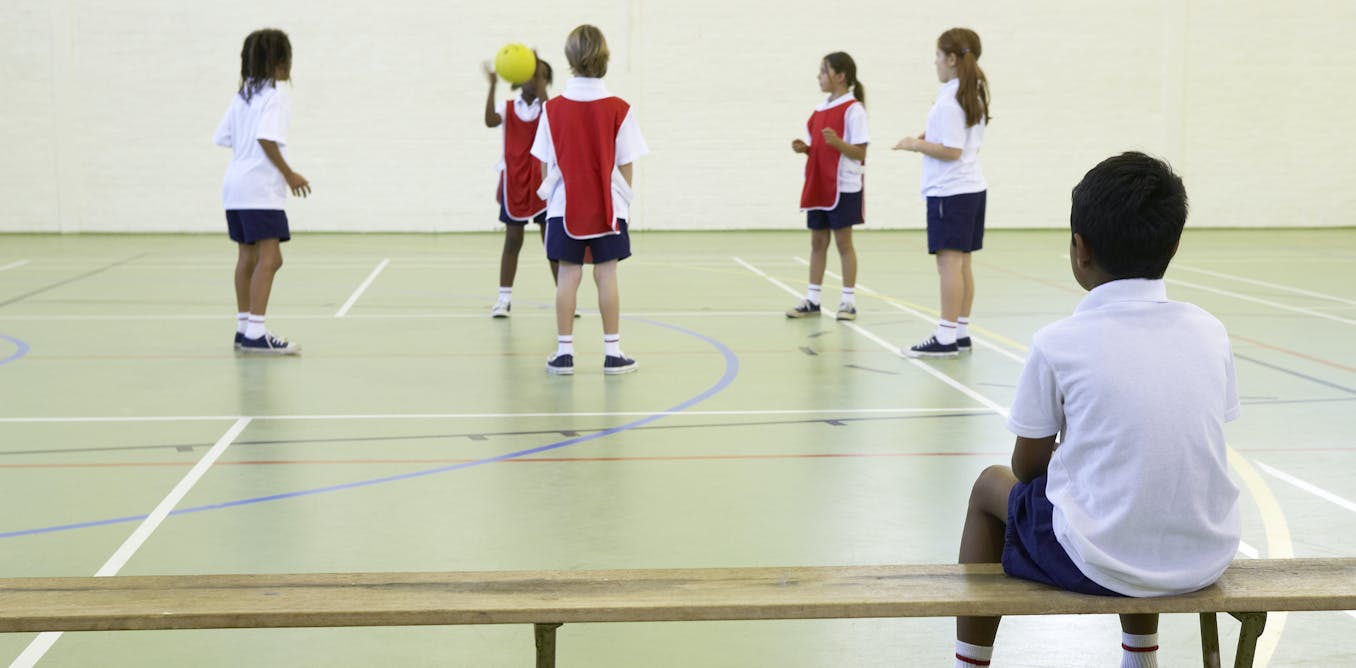Sadly, a 12-year old child in British Columbia died by suicide following a case of online sextortion. The child’s grieving parents are passionately urging families to talk to their children about the dangers of online predators in the hopes that other children can be safeguarded against online risks.
Sexual extortion, or “sextortion,” occurs when an individual is coerced into providing money or sexual images by threatening to release sexual or nude photos or videos of them online.
Many sextortion cases occur within existing relationships with peers, romantic partners or adults. However, in some cases, predators unknown to the child groom them into sharing intimate pictures or videos, later weaponizing them for blackmail.
As clinical psychologists, we recognize and empathize with the challenge parents face in being fully appraised of their children’s online activities and navigating difficult topics. Below we offer information and practical advice for parents about initiating and having conversations about sex, sextortion and healthy device habits.
1 in 20 adolescents experience sextortion
(Shutterstock)
In a study of over 5,500 adolescents aged 12 to 17 in the United States, five per cent reported they had been victims of sextortion. Harm associated with sextortion included repeated online contact, harassment and having fake online profiles created of them.
About one-quarter of youth who reported being sextorted also reported being threatened with having their pictures publicly posted or sent to others without their consent.
When children and adolescents are targets of sextortion, they may experience intense fear and/or shame in speaking with their parents and caregivers about what has happened, and may be less aware of resources or supports they can turn to for help.
Boys are more likely to experience sextortion
While girls are more likely to experience sexual assault and have their images shared without their consent, boys are more likely to experience sextortion. It is estimated that victims in 91 per cent of reported sextortion cases are boys. According to a report by the Internet Watch Foundation, boys often mistakenly believe they are engaged in a mutual exchange of sexual images, which then results in sexual extortion for financial gain.
In addition to being victimized in sextortion cases, boys are less likely than girls to disclose victimization to a parent or authority figure. This may stem from feeling persistent shame and stigma in being victims of sexual abuse. Societal expectations of boys are often to demonstrate strength and courage, which can create challenges in openly acknowledging and/or sharing when they are vulnerable or in distress.
Cognitively, adolescent males are more susceptible to impulsivity and risky behaviour than girls, and are therefore more likely to risk sharing photos that are later used as blackmail.
Talking to children about sexual health and digital safety

(Shutterstock)
Educating children about online safety involves fostering their understanding of digital risks, as well as digital citizenship — how to be safe, legal and ethical online.
-
Have conversations with your children about sex, consent and online activities and safety, early and often. You can vary the content based on the child’s age and developmental stage. For example, with younger children you may start having conversations about consent, sex, and online risks in general terms, and then when they enter the tween years, these conversations can be elaborated to include sexting, sextortion and other online risks. When conversations start early in children’s development, they are often less awkward during adolescence because it’s familiar for you and your child to be talking about these topics.
-
Approach your child with openness and a willingness to understand. It is developmentally normal for adolescents to be curious about sexuality, and among older adolescents, to engage in sexual relationships. It is also a function of an adolescent’s developing brain that decisions are not always made with long-term consequences in mind. As such, it is important to approach conversations about sex and online behaviours without judgement, blame or overreaction. Responses such as “What were you thinking?” or “How could you do something like this?” could increase shame and reduce the likelihood they will come to you in the future.
-
Find out what they know already. Conversations about online risks such as sextortion are understandably difficult topics to broach with your child. You can start by asking your child questions about what they know. “Have you heard of sexting or sextortion?” “Tell me what you think it is?” Alter the conversation based on their response. During these conversations, reinforce the idea that not everyone is who they say they are online. Suggest that the only friends they should have online are the ones they know in real life.
-
Generate “what if” scenarios. Spend some time with your child discussing how to deal with difficult situations online, which they are very likely to encounter at some point in their youth. We recommend generating “what if” scenarios with them. “What if I send this picture and the person I send it to threatens to share it with others? Who could I turn to for help?” Also, before posting or sending any photo or video clip online, teach children to ask themselves, “Is it illegal, harmful or hurtful, or does this put my personal information at risk?”
-
Stay involved in your child’s internet and smartphone use, which includes knowing who their friends are on and offline and what social media apps and websites they’re using. Set boundaries with your children about what websites they can visit, what social media apps they can use and what they can safely share online. If they are struggling to follow through on these limits, you can use content blockers to restrict access to mature content and set boundaries for internet and device use. This resource provides a helpful guide for implementing parent controls.
-
Try different strategies. If your child squirms and disengages every time you bring up sex, sextortion or online risks, don’t be discouraged; these conversations are hard for everyone! You can try approaching the conversation in different ways. For example, you can go out for a walk with your child and initiate this conversation. Some children feel more at ease talking about difficult topics when they aren’t sitting face-to-face with an adult. Another strategy is to try humour to get the conversation started. A public health campaign called “Don’t Get Sextorted” has an educational video targeted to adolescent boys. Parents could play this lighthearted video, laugh with their child and use it as a catalyst to further conversations.
Guidance that children receive from parents or a trusted adult about online risks is crucial for shaping their online — and offline — behaviours and decision-making. Let’s get talking to our kids about their digital safety!
Resources
Resources for parents who want to learn more about keeping their kids safe online include Common Sense Media and Get Cyber Safe.
Parents or teens concerned about videos and images being distributed without their consent, or who are experiencing sextortion, should report their concerns immediately to local police. In Canada, they can also consult needhelpnow.ca and send a report to cybertip.ca. In the U.S., they can consult stopbullying.org.



